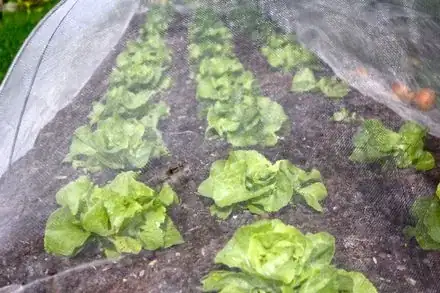This MyTinyPlot.co.uk blog post photo showing some enviably healthy looking autumn lettuces under protection got me down the garden centre today looking at protection options for my autumn/winter veg.

You can see they're using some kind of super fine fleece.
But what is the difference between plain old clear polythene (AKA polyethylene) / mesh / fleece? For cold weather protection. When do you opt for one or the other?